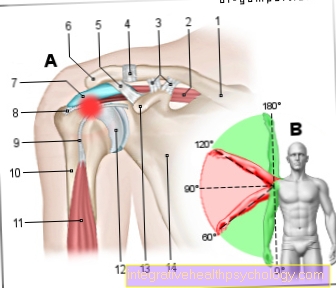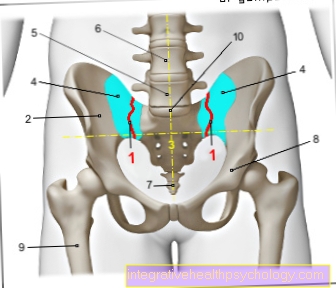The didactic triangle for successful teaching
What is a didactic triangle?
The didactic triangle makes the relationship between teacher (teacher), learner (pupil) and the subject (learning material) understandable in a diagram.
A triangle with three equally long sides is used for this. The teacher is written on one corner, the learner on the next and the learning material on the last corner. This graphic creates a basis for classroom analysis and provides an overview of the didactics. It is thus illustrated in the didactic triangle how the teaching is structured, so it serves the scientific area of education.
The didactic triangle
According to Klafki
Wolfgang Klafki, a professor of educational science in Marburg, lived from 1927 to 2016.
He was an important didactician in Germany and formed teaching sample designs from teachers. Klafki dealt with the subject and the learner. He paid his attention to this relationship in the didactic triangle.
In the context of didactics, he accordingly dealt with the question of the meaning of the educational content and teaching content for the student. The didactic analysis forms the core of the lesson planning and preparation. For this analysis, Klafki asks the following questions about the course content, which are intended to serve as key questions for lesson planning.
- He begins with the question of the present relevance of the topic for the student. The next question is about the future, examining how it will affect the future life of the student.
- Furthermore, the question of the structure of the topic is dealt with, key questions are considerations of the extent to which the topic requires prior knowledge, etc.
- The next question deals with the exemplary meaning, which also means the connection between this topic and other problems.
- The last question deals with the accessibility of the subject to the students. How must the knowledge be conveyed so that it is tangible and understandable for the student.
Also read:
- What are the learning strategies?
- What type of learner am I?
According to Reusser
Kurt Reusser was born in 1950 and is an educator and professor for educational psychology at the University of Zurich. He deals with didactics and video-based teaching research.
In the field of didactics, Reusser deals with the question of how didactics and methodology can promote and develop independent learning and understanding, as well as competence-oriented didactics.
You might also be interested in:
- What are the learning strategies?
- What type of learner am I?
According to Meyer
Hilbert Meyer is a German educator who deals with didactics and became known through study books on didactics. Meyer developed the idea of competence-oriented or action-oriented teaching.
In his elaboration he describes that competence-oriented teaching should always contain elements related to the situation and the person in balance. In addition, it is very important for Meyer to maintain a balance between:
- Structuring and openness,
- common and individual learning sequences
- systematic and action-oriented forms of learning
The teacher works out these different balance systems and makes sure that the lessons are open to the students and that they can actively participate. Furthermore, the students should be encouraged to self-regulated learning through a differentiated learning offer. The teacher has the task of responding to the individual development opportunities of the student in which he works across disciplines.
The knowledge of the students should be built up in a network and the benefits of the knowledge should be recognizable for the students in realistic application situations. In addition, the development of problem-oriented tasks and the viewing of mistakes as learning progress are among the quality features for competence-oriented and action-oriented teaching.
Also read:
- The different forms of teaching
- What are the learning strategies?
- What type of learner am I?
According to Herbart
Johann Friedrich Herbart (1776-1841) was a German philosopher, psychologist and educator. He made a major contribution to the development of didactics, so that the basics of his ideas can still be found in today's teaching.
Herbart assumed that learning is not about the accumulation of knowledge, but about the meaningful connection of existing knowledge and the new learning material. The student should want to learn and thus develop an unprejudiced interest in his environment. In order to achieve this, the Herbart teaching has the following structure.
- It starts with clarity. The new topics should be clear and understandable for the learner. This clarity relates to the content, language and structure.
- This is followed by the stage of linking the new topic with existing knowledge. Links and relationships are also established within the new knowledge at this stage. This level is also called association.
- This is followed by the creation of connections and the classification of the material in a system.
- From this stage the final stage develops. Practicing, repeating and applying the new knowledge.
His step-by-step concept was further developed and revised by other educators.
You might also be interested in:
- The different forms of teaching
- What are the learning strategies?
- What type of learner am I?
After Prange
Klaus Prange was born in 1939 and is a German educational scientist. He dealt intensively with general didactics and pedagogy. Prange describes in didactics that the main task of the educator is to shape the pupils. The educator shapes the view of the world from the students. However, the learner also forms himself, Prange describes that educational processes of influence can hardly be separated from independent development and are mutually dependent.
You might also be interested in: Raising children - you should know that!
After Niemeyer
August Hermann Niemeyer lived from 1754 to 1828 and was a German theologian and educator.
He led a seminar in Halle on the theory of teaching and education. He also wrote books on the principles of upbringing and teaching for parents and teachers.
Niemeyer has also dealt with didactics by translating Greek and Roman classics in the field of pedagogy and publishing texts on didactics.
Also read: The different forms of teaching

.jpg)























.jpg)



